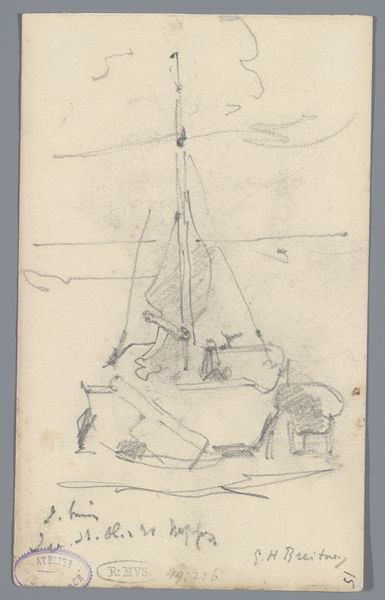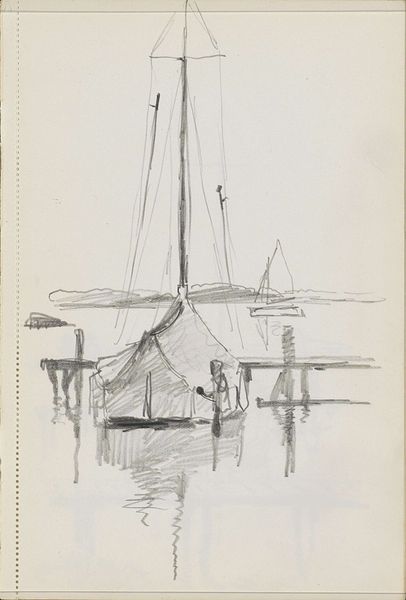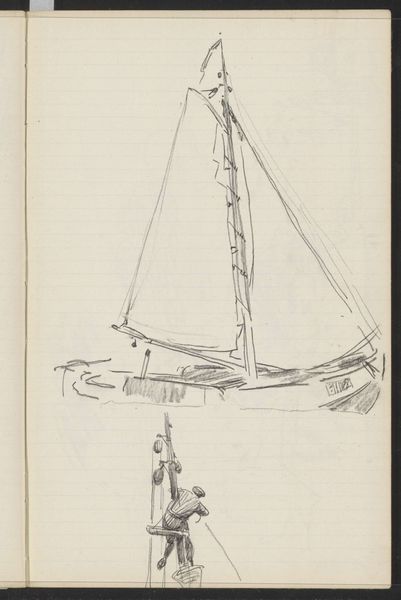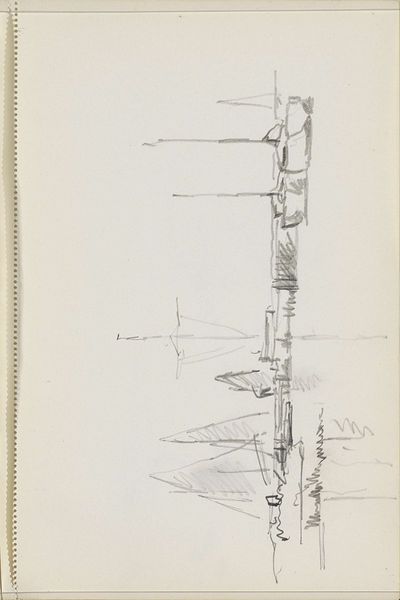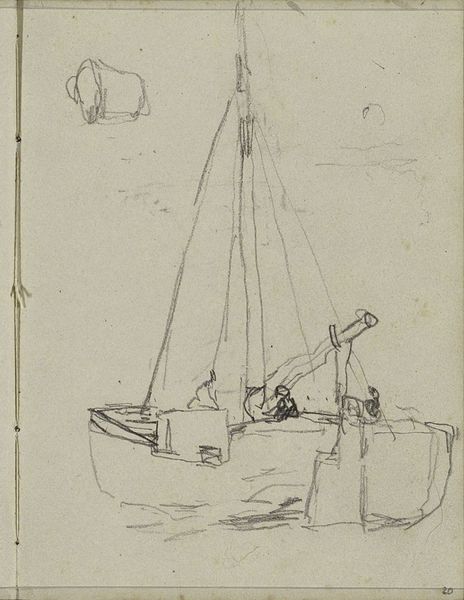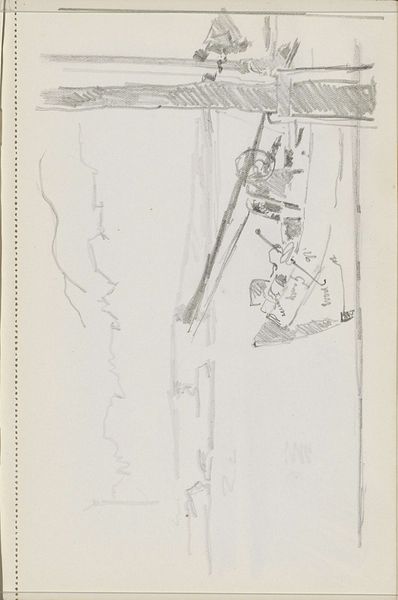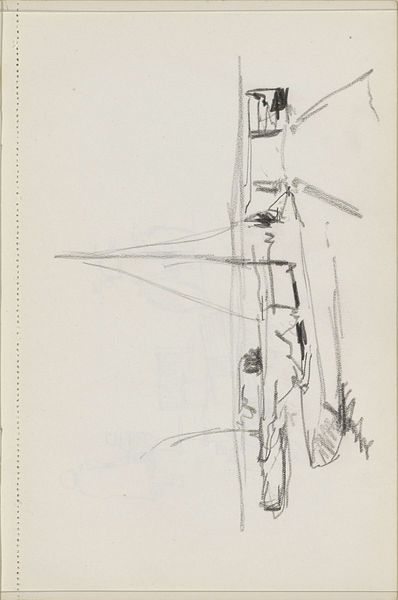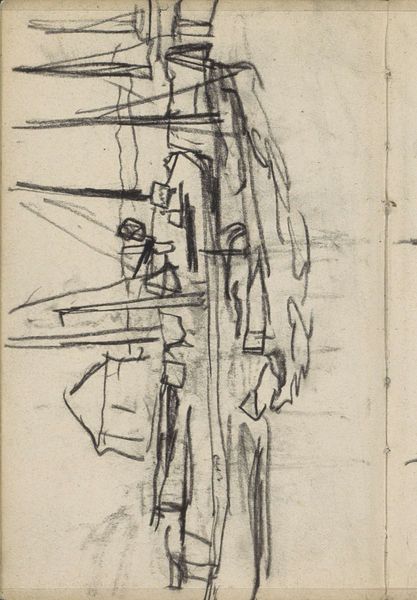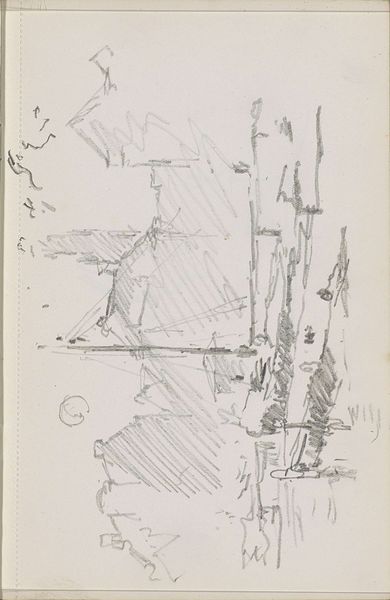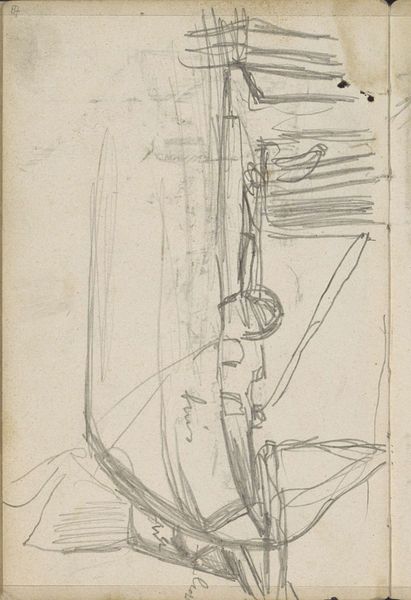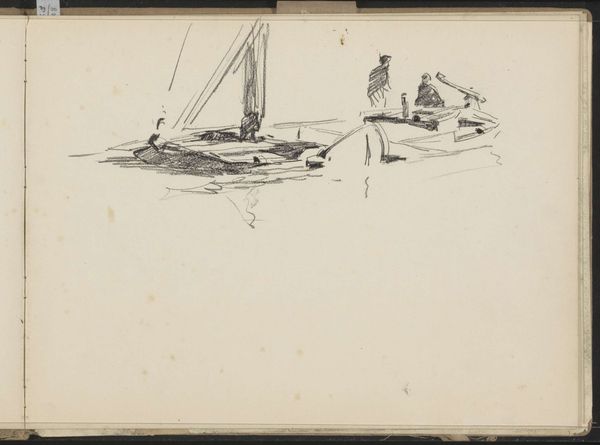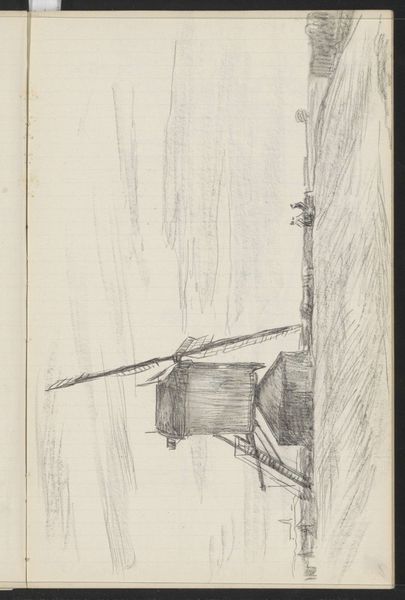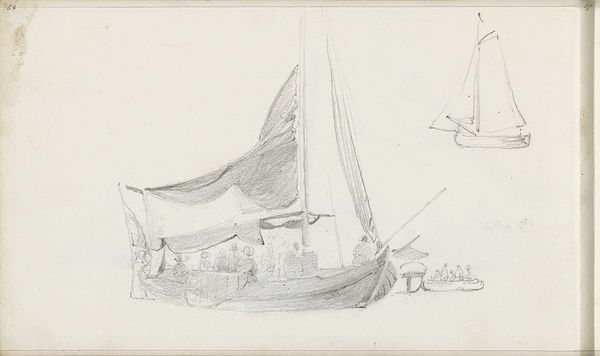
drawing, paper, pencil
#
drawing
#
amateur sketch
#
light pencil work
#
landscape
#
paper
#
personal sketchbook
#
idea generation sketch
#
sketchwork
#
ink drawing experimentation
#
sketch
#
pen-ink sketch
#
pencil
#
sketchbook drawing
#
sketchbook art
#
initial sketch
Copyright: Rijks Museum: Open Domain
Curator: This sketch is titled "Bukkende figuur op een zeilschip," which translates to "Bowing Figure on a Sailboat," created by Cornelis Vreedenburgh between 1890 and 1946. It’s a delicate drawing in pencil and ink on paper. Editor: My first impression is the solitude. There’s a sense of quiet labor in rendering a simple scene with minimal materials; you can feel the handmade origin here, literally the hand producing an image. Curator: Precisely. I see this less as a finished product and more as an example of the artistic process. We're looking at an object documenting early thought and technique—almost as if the artist is experimenting with the very notion of work by using the materiality to evoke what happens at sea. Editor: Let's also consider the 'bowing figure' referenced in the title. What does the posture of the figure on the boat communicate about labour, class and society in general? Do the other characters on the boat have other activities? Where does it set sail and come from? How does this all affect its artistic reception and overall meaning? Curator: Well, you're right to focus on the ambiguity of their social interactions, particularly during this time frame of high capitalist industry. It is not exactly clear from the marks where their work would lie outside or even in relation with those power structures... We can consider the symbolism. The sailboat itself signifies transportation, maybe freedom or escape. Editor: Freedom yes, perhaps romanticised… but for whom? What’s interesting here is that freedom may just be another part of production… who's consumption patterns benefit most from this kind of scene being produced or rendered by the artist. This kind of scenery provides great comfort and enjoyment to wealthy patrons… not necessarily people in general. Curator: It certainly speaks to different audiences in different ways. To one, it’s an amateur sketch, perhaps even a relaxing meditative piece. But from your perspective, you read that context into labor, the class system and ultimately how all these sketches lead towards different audiences in how we view it nowadays in this very moment. Editor: I would agree and argue. It’s crucial that we do consider the sketches production process… even its distribution into art books or displayed within the Rijksmuseum. Everything matters in our encounter. Curator: An apt observation! It makes us appreciate how an otherwise very 'quiet' landscape might have further cultural impacts. Editor: Exactly—there’s always much more than meets the eye!
Comments
No comments
Be the first to comment and join the conversation on the ultimate creative platform.
